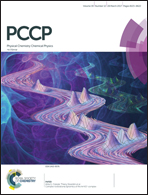Improving the capacity of lithium–sulfur batteries by tailoring the polysulfide adsorption efficiency of hierarchical oxygen/nitrogen-functionalized carbon host materials†
Abstract
The use of monolithic carbons with structural hierarchy and varying amounts of nitrogen and oxygen functionalities as sulfur host materials in high-loading lithium–sulfur cells is reported. The primary focus is on the strength of the polysulfide/carbon interaction with the goal of assessing the effect of (surface) dopant concentration on cathode performance. The adsorption capacity – which is a measure of the interaction strength between the intermediate lithium polysulfide species and the carbon – was found to scale almost linearly with the nitrogen level. Likewise, the discharge capacity of lithium–sulfur cells increased linearly. This positive correlation can be explained by the favorable effect of nitrogen on both the chemical and electronic properties of the carbon host. The incorporation of additional oxygen-containing surface groups into highly nitrogen-functionalized carbon helped to further enhance the polysulfide adsorption efficiency, and therefore the reversible cell capacity. Overall, the areal capacity could be increased by almost 70% to around 3 mA h cm−2. We believe that the design parameters described here provide a blueprint for future carbon-based nanocomposites for high-performance lithium–sulfur cells.



 Please wait while we load your content...
Please wait while we load your content...